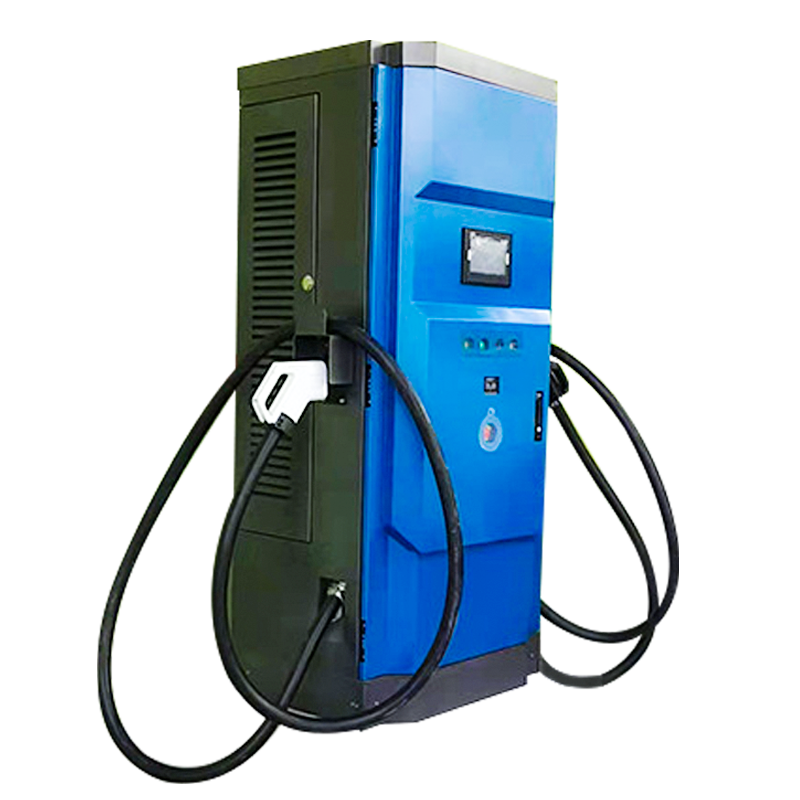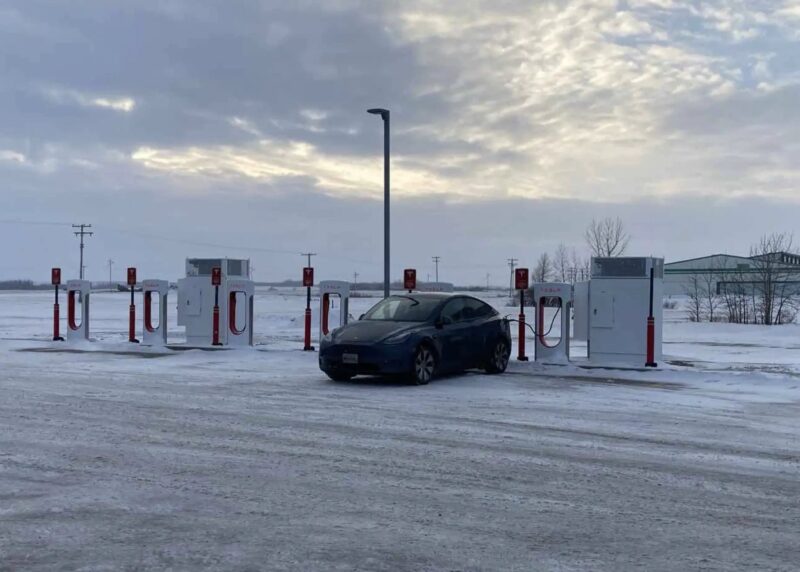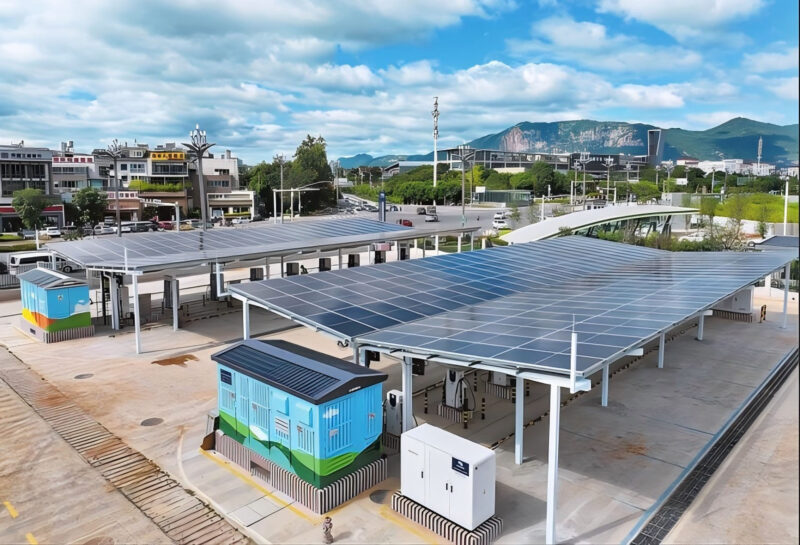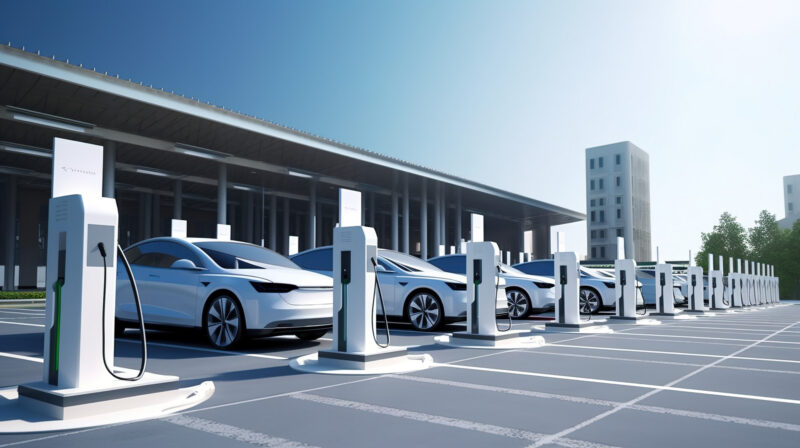









Floor-Mounted 2 Guns DC EV Charger
The 2 Guns DC fast charger for electric vehicles offers versatile solutions with power outputs ranging from 60kW to 360kW, allowing you to charge multiple electric vehicles simultaneously. This cutting-edge EV charger provides flexibility and fast charging for any electric car, ensuring optimal energy efficiency and fast charging times. Whether at home, commercial charging stations, or public EV charging stations, the 2 Guns DC charger guarantees reliable and high-performance charging for your electric vehicles.
- IP54
- OCPP 1.6
- Full Protection
Charging Power
- Detailed Specifications
- Rated power:60kW-360kW
- Input current:95A-285A
- Gun quantity:2
- Cable length:5M or customized length
- Size(mm):1750X620X780
- Altitude:2000M
- Gun cable length:5M(customization acceptable)
- Input voltage:AC380V+20%/AC480V+20%(optional)
- Output current:0-250A
- Charging way:Charge alternately/evenly
- Interface:7" color touch screen+C card contacless card reader
- Weight:320KG-360KG
- IP level:IP54
- Standard:China standards(GB/T):20234,18487 ;urope standards(CCS): EN61851,EN62196 ;Japan standards :Chademo
- Output voltage:200-750V(200-1000V)
- Frequency:45~60 HZ
- Charging mode:Plug and play/RFID/OCPP
- Networkconnection:Standard configuration:CAN/485/Ethernet Selective:GPRS/4G/WIFI
- Operating temperature:-25°C~+50°C(Derating higher than 50°C)
- OperationHumidity:5%-90%RH,non-condensiong
- Protocol:China standards(GB/T):27930;Europe standards(CCS):DlN70121 1S0 15118;Japan standards :Chademo 2.0
Industrial design
- Classic floor standing appearance with stable frame design.
Safe and reliable
- Protection grade up to lP54,moisture-proof,water-proof,condensening proof,dust proof and flame retardant.
- With over and undervoltage,overload,short circuit,lekage,battery anti-reverse protection,ect.K10 anti-collision level.
- IK10 anti-collision level.
Rich configuration
- Classic floor standing appearance with stable frame design.
Powerful Power
- his high - power DC charging product can reach a maximum power of 360kW, and its charging speed is astonishing. In actual tests, it can replenish approximately 200 kilometers of driving range for most mainstream electric vehicles in just 10 minutes. With advanced power conversion technology, the charging efficiency is as high as 98%, greatly reducing energy consumption and saving your charging costs. The product's shell is made of high - strength, fire - resistant, waterproof, and corrosion - resistant materials. After rigorous 1000 - hour salt spray tests and 10,000 vibration tests, it can operate stably in extreme environments from - 40°C to 60°C, ensuring reliable charging services under various harsh conditions.
Customized Charging Solutions
- We provide highly customized services with a maximum output power of 360kW, ensuring that your specific charging scale, frequency, and power requirements are fully accommodated. Our chargers are designed to be adaptable to various grid voltages and frequencies, offering flexibility for use worldwide. Whether you need to charge a large fleet or accommodate diverse geographical standards, our solutions ensure efficient, reliable, and safe charging, tailored precisely to meet the needs of your electric vehicles, wherever they are located.
Comprehensive Service
- We have a professional service team that provides one - stop services from product consultation, installation to after - sales. During the product consultation stage, senior technical consultants are online 24/7 to answer any of your questions, with an average response time of no more than 15 minutes. The installation service is carried out by professional engineers with an average working experience of over 5 years. They will tailor the installation plan according to your site conditions to ensure that the equipment installation and debugging are completed within 48 hours, enabling your charging facilities to be put into use quickly. In terms of after - sales, we have set up a dedicated 24 - hour after - sales hotline and provide free regular maintenance for the equipment every year to ensure its long - term stable operation and give you peace of mind.
Explore our wider range of charging products
Our success stories
From homes to commercial spaces, from cities to remote areas, witness how we drive the growth of the EV charging sector with exceptional products and services.
EV Charging Resources

How to Maintain EV Charging Infrastructure in Extreme Climates (-30°C to +50°C)?
Extreme temperatures (-30°C to +50°C) challenge EV charging infrastructure through material degradation, condensation, and efficiency loss. Solutions include silicone cables, UV-resistant housings, active cooling/heating systems, and quarterly maintenance tailored to climate severity. Real-world failures (e.g., northern China’s cold) highlight the need for pre-weather inspections, firmware updates, and sheltered installations. Prioritize adaptable materials and robust thermal management for reliable chargers.

Do You Need an EV Home Charger?
A home EV charger isn’t mandatory but enhances convenience, cost-efficiency, and battery health. Public charging risks availability issues and higher costs. Opt for Level 2 charging (240V) for home use, balancing speed and affordability. Assess electrical capacity and explore government subsidies for installation savings.

How Can Photovoltaic Storage Charging Stations on Highways Achieve Profitability?
Highway-integrated photovoltaic (PV) storage charging stations achieve profitability by combining charging fees, grid services, government subsidies, and ancillary revenue (e.g., retail, ads). Unlike standard stations, they blend solar power, battery storage, and smart grid interaction to cut costs and boost resilience. Key strategies include optimized energy management, dynamic pricing, V2G technology for grid balancing, and location-based amenities. Initial costs are offset by incentives, while diversified revenue streams and future trends like ultra-fast charging and AI-driven operations ensure long-term viability in the EV ecosystem.

Is Subscription-Based EV Charging a Worthwhile Investment?
Subscription-based EV charging (CaaS) offers recurring revenue and customer loyalty through models like direct ownership, partnerships, and fully funded setups. Key factors include reducing upfront costs, managing operational expenses (electricity, maintenance), and ensuring strategic locations. ROI depends on utilization, pricing, and scalability. Implementation involves market research, funding, hardware/software selection, and customer-centric marketing. Partnering with reliable manufacturers and optimizing operations are critical for success in this evolving market.
get a tailored OEM solution
- Comprehensive OEM solutions
- Safe and reliable chargers
- Cost-effective options
- Suitable for all types of businesses
